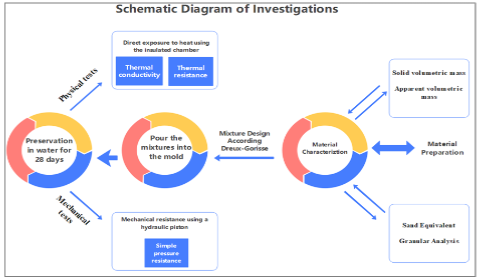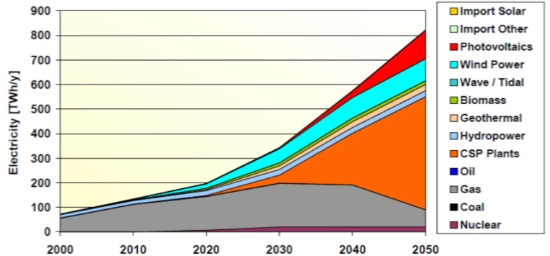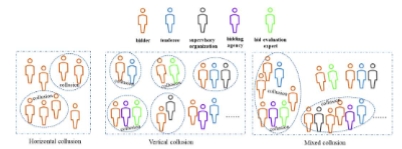
Prof. Scholz Miklas
University of Johannesburg, South Africa







 Open Access
Open Access
Article
Article ID: 268
by Tao-Hua Wang, Hao-Chiang Koong Lin, Cheng-Tsung Li
Building Engineering, Vol.1, No.1, 2023;
The paper unfolds the intricate tapestry of sustainable design, weaving in the pivotal role of renewable energy systems and astutely tying it to the eco-conscious blueprint of modern museums. The introduction sheds light on the potent impact of sustainable design in mitigating environmental hurdles and fostering a greener, more sustainable future, with a nuanced nod towards sustainability in museum management and design. Motivated by an aspiration to traverse diverse viewpoints and methodologies in sustainable design, the research stretches across numerous sectors—encompassing construction, architecture, engineering, manufacturing, software development, and notably, museum design—intending to carve out energy-sparing and ecologically mindful solutions. This paper underscores the imperative of astute design practices that optimize structures, such as museums, to maximize the utilization of renewable energy resources like solar arrays, wind turbines, and geothermal systems. It advocates for a burgeoning need to escalate the horizon of sustainable design beyond singular buildings, intertwining standalone energy systems at multiple tiers—from community power grids to expansive urban networks—ensuring a streamlined energy distribution and curbing waste. Wading through the literature review, an exploration of varied sustainable design strategies unfolds, encompassing facets like supply chain management, product safety, architectural design, manufacturing, food packaging, transportation, and pedagogy, with a specific lens on embedding sustainability in museum infrastructure and operations. The culmination of the paper discerns ten cardinal trends in sustainable design, spanning from the integration of renewable energy systems to the infusion of sustainable education and positive psychological interventions in educational institutions, thereby spotlighting the metamorphosing terrain of sustainable design across an array of disciplines.
 Open Access
Open Access
Article
Article ID: 278
by Hermawan Hermawan, Syah Reza Pahlavi Muhammad, Daffa Amrulloh Mohamad, Nabila Arrizqi Annisa
Building Engineering, Vol.1, No.1, 2023;
This research aims to analyze the environmental conditions inside and outside the Statiko Coffee Shop, Wonosobo, Indonesia, with a focus on noise, light intensity, air temperature, and humidity. Measurements were carried out at certain time intervals starting from 15:00 to 23:00. The collected data shows significant variations in each observed parameter. Indoors, noise levels varied, light intensity was recorded, air temperature fluctuated, and humidity ranged from 78.0% to 85.0%. Outdoors, wider variations in noise, light intensity, air temperature, and humidity were seen. The results of this research show the importance of good understanding and design regarding ventilation and environmental management to create comfort for visitors in a coffee shop. This information can be used as a basis for designing an effective ventilation system and maintaining good indoor air quality, as well as considering external environmental influences such as noise and light intensity. Further research is needed to provide more specific recommendations for optimizing the environment at the Statiko Coffee Shop, Wonosobo, Indonesia.
 Open Access
Open Access
Article
Article ID: 487
by Mikayel G. Melkumyan
Building Engineering, Vol.1, No.1, 2023;
Frequent earthquakes of medium and high intensities in different countries of the world constantly testify that engineers, in most cases, are illiterately solving the problem of the interaction of load-bearing and non-load-bearing structures in the buildings. As a result, the mass destruction of non-load-bearing walls and damage in load-bearing structures take place, and they are illustrated in the paper for various buildings in different countries. We must always remember the quote of Galileo Galilei: “Ignorance is the mother of malice, envy, greed and all other low and gross vices, as well as sins”. Therefore, this paper points to the total illiteracy and corruption that reign in the construction industry of Armenia in all cycles, starting with design, project expertise, issuing construction permits, and ending with construction and its technical and author’s supervision. It shows that the people employed in the construction complex have completely forgotten about the lessons of the devastating Spitak earthquake and completely ignored the high seismic danger in the territory of Armenia. Design organizations envisage old, unreliable methods for mass construction, where the dilemma of how to simultaneously minimize inter-story drifts and floor accelerations along the height of the buildings cannot be solved. This quite obviously leads to a significant increase in the cost of construction, which fully satisfies corrupt builders and corrupt state bodies. In the second part of the paper, the author states that one of the ways to overcome the current situation is the widespread application of the seismic isolation systems created by him and largely implemented in Armenia. In terms of the number of seismically isolated buildings per capita, the author brought Armenia to the second place in the world after Japan. The advantages and reliability of structures with seismic isolation systems both in the construction of new buildings and in the retrofitting of existing buildings are clearly illustrated. A comparative analysis of deformed states and values of accelerations along the height of buildings with and without seismic isolation systems is given. The paper also demonstrates the high economic efficiency obtained from the use of seismic isolation systems. It is shown that in the construction of new seismically isolated buildings, savings reach 40%, and the retrofitting of existing buildings by application of seismic isolation costs up to 5 times less, compared to traditional methods of strengthening. At the same time, the retrofitting of existing buildings by means of seismic isolation is carried out without interruption of their operation.
 Open Access
Open Access
Article
Article ID: 403
by Erol Kalkan, Polat Gülkan
Building Engineering, Vol.1, No.1, 2023;
This research scrutinizes the seismic threat looming over Istanbul, potentially subject to a substantial earthquake. We analyze six plausible earthquake scenarios, utilizing six ground motion prediction equations (GMPEs), to forge high-resolution seismic hazard maps. These maps reveal not only peak horizontal ground accelerations but also spectral acceleration values across varying temporal frames, integrating the amplification effects of softer sediments. Our approach delineates that Istanbul’s western shoreline faces heightened risk, with median spectral accelerations at 0.3 s approaching 1 g, signifying intense shaking potential. In contrast, the area encompassing the financial district exhibits lower values, around 0.3 g. The granularity of these findings lays bare the seismic vulnerabilities of the region, offering a window into the risks and potential damages facing this bustling metropolis. This enhanced understanding paves the way for strategic urban planning and risk mitigation efforts aimed at safeguarding Istanbul’s populace and infrastructure. This article succinctly condenses our study’s pivotal conclusions, presenting a clarion call for proactive measures to diminish earthquake impacts on this dynamic urban landscape.
 Open Access
Open Access
Article
Article ID: 488
by Hashim Ataie, Taiki Saito
Building Engineering, Vol.1, No.1, 2023;
In the field of civil engineering, tuned mass dampers (TMDs) serve as passive devices designed for dynamic vibration control of structures. When dealing with buildings exhibiting nonlinear behavior under dynamic loads, the effectiveness of TMDs may be affected by detuning due to the degradation of the building’s strength. Therefore, addressing the non-linear behavior requires a unique strategy involving the tuning of TMDs to specific time periods following the onset of non-linearity. The proposed approach in this study entails a pushover analysis to establish the pushover capacity curve. The regions between the origin and a target drift of 1/150 are then represented using an idealized trilinear form, with the initial segment corresponding to linearity and subsequent segments capturing non-linear behavior. The second segment spans from the onset of non-linearity to a target drift of 1/400, and the third segment covers the drift range from 1/400 to 1/150. Examining this strategy involves calculating time periods for each segment. Subsequently, three single TMD (STMD) scenarios and one multiple TMD (MTMD) scenario with 3 TMDs, each tuned to time periods corresponding to specific segments of the idealized trilinear, are compared in this study. The evaluation includes non-linear dynamic analysis of 7-story and 25-story reinforced concrete buildings equipped with these TMD scenarios. The floor maximum displacement and peak acceleration results indicate that the STMDs tuned to the time periods corresponding to the non-linear segments exhibit robustness, surpassing the performance of the STMD tuned to the fundamental period. Remarkably, the MTMD scenario demonstrates superior robustness compared to all three STMD scenarios. Further analysis under wind load on the same 25-story building confirms the effectiveness of the MTMDs and STMD tuned to the nonlinearity segment compared to the STMD tuned to the fundamental period. This research provides valuable insights into TMD design for enhanced building performance under non-linear conditions.
 Open Access
Open Access
Review
Article ID: 210
by Sahand Sharifzadeh, Mohammad Taghipour
Building Engineering, Vol.1, No.1, 2023;
The main purpose of this study is to investigate the effect of environmental transformational leadership. Due to the dry climate, Iran always needs to plan for water facilities. Among the water facilities, the dam is the most important because of the supply of drinking water, agriculture, hydroelectric energy, etc. The construction of a dam has always been important due to the huge cost involved, and on the other hand, due to the complexities involved in its construction, it is accompanied by risks. In this research, the ways of increasing productivity in construction management and dam construction have been discussed by considering the issue of project control in order to save costs and time and increase the quality of construction.